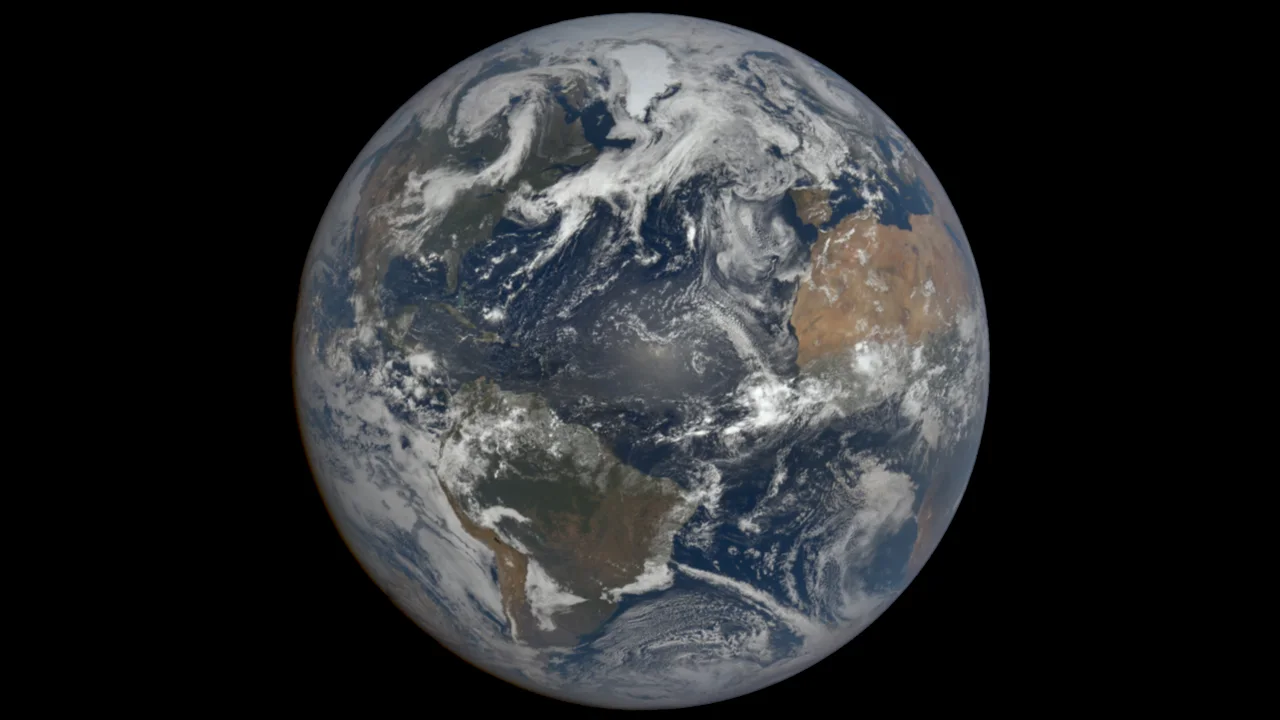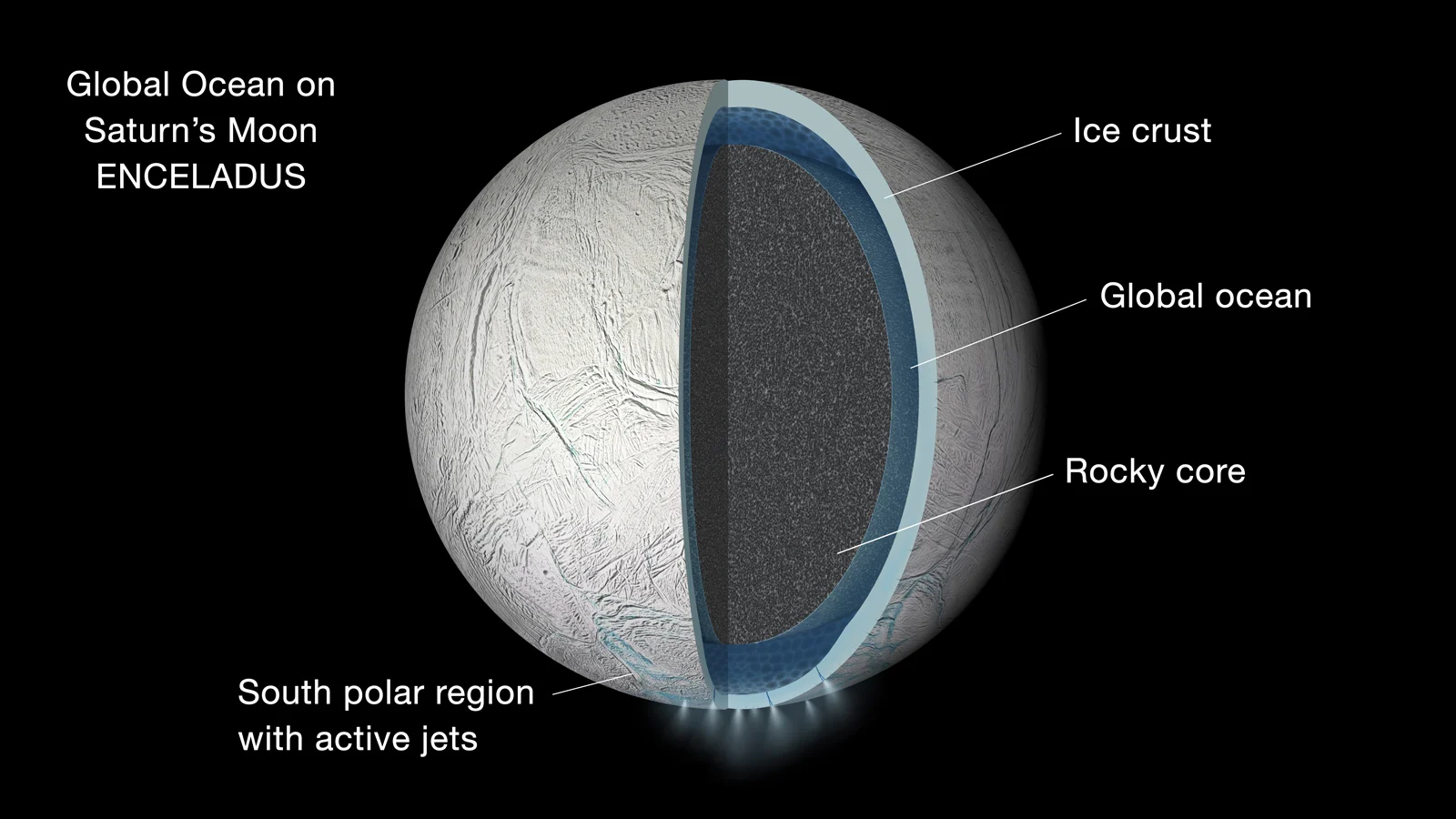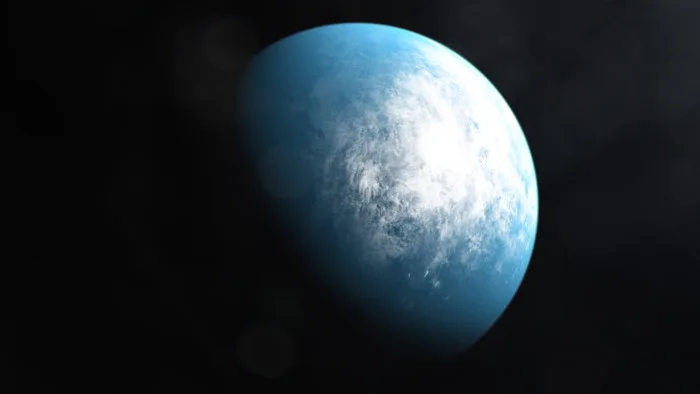
What's with the strange 'mono-climate' planets of Star Wars?
On this May the Fourth, explore the unusual worlds of a galaxy far, far away.
Everywhere we look, a long time ago, in a galaxy far, far away, there are weird worlds that possess only one climate. How could these mono-climate planets come to be?
Here on Earth, we have numerous climates — icy wastelands, temperate plains, tropical rainforests, and scorching deserts, just to name a few. These are spread about on four major land masses, with latitude and general weather patterns being the dominant factors that control where these climates exist.

In this image of Earth, snapped by the DSCOVER satellite's EPIC camera on July 15, 2020, we see snow and ice, mountains, plains, grasslands, forests, jungles, oceans, and deserts. Credit: NASA
Look to the Star Wars galaxy, though, and most (if not all) of the planets and habitable moons we've seen have only one climate that covers the entire world. Even planets that are reasonably Earth-like still lack some basic features that should exist there, such as polar ice caps. With their ability to traverse the galaxy in a matter of hours or days, it's an easy assumption that the Galactic Republic would have been capable of terraforming planets. This may account for some, but how could other worlds have developed like this, naturally?
Tatooine is a desert world baked by twin stars — Tatoo I and Tatoo II. Like Mars, it likely had a much wetter environment in the past. The Dune Sea is possible evidence of it having a vast ocean, which probably dried up due to the system's binary stars heated up as they aged. Or, perhaps, like Jakku, with its immense impact scar, some cataclysmic event may have caused the planet to lose its water. In either case, there is likely not enough moisture on the planet for polar ice caps to form. Other desert worlds in Star Wars include Mandalore, Geonosis, Jedha, Pasaana, and Arvala-7.
Dagobah, the planet where Luke Skywalker was trained by Jedi Master Yoda, is completely covered in swamps and bogs. This is very likely due to the thick layer of clouds that blankets the planet, similar to what we see on Venus (although not to the same extreme). The planet's persistent clouds would trap light and heat, producing a fairly uniform range of temperatures across the entire surface. 'Mud' planets, such as Mimban and Wobani, are probably quite similar, although they lack the abundant biosphere of Dagobah.
Kashyyyk, the homeworld of the Wookiees, is an entire planet covered by expansive rainforests and jungles, with numerous small tropical seas. The planet's lack of an axial tilt means it does not experience seasons. Also, the truly massive biosphere of this planet (with wroshyr trees that grow up to 400 metres tall) may be what maintains relatively uniform temperatures from pole to pole. Other forest worlds we've seen include Tokodana, the planet that became Starkiller base, Dantooine, Sorgan, and Corvus. How these worlds maintain their uniform climate is not as clear.
Alderaan (before its destruction), Naboo, and Lothal appear to be some of the most 'temperate' planets in the Star Wars galaxy, although each had its own dominant terrain (Alderaan: mountains, Naboo: lakes, Lothal: grasslands). All three of these worlds may have benefited from at least some terraforming to increase the amount of habitable land for their populations.
An ice planet like Hoth could develop fairly easily, simply by having an Earth-like world form farther out from its star. It's also possible that Hoth had simply gone through a climatic change, similar to the 'Snowball Earth' stage our planet may have gone through around 650 million years ago. It's thought that, at the time, the eruption of a supervolcano may have pumped enough dust or sunlight-reflecting sulfur compounds into the atmosphere to cool the climate. It is also possible that a surge in ocean life may have reduced the concentration of carbon dioxide in the atmosphere, triggering a global cooling event.
For the moons of Yavin IV and Endor, the infrared radiation given off by the gas giant planets they orbit can supply more than twice the energy the moons would receive from their system's parent star. This would be an abundant heat source, especially if the planet was reasonably close to its star (perhaps at the same relative distance that Mars is from our Sun). This added heat would help polar regions of the moons maintain a more temperate climate, as well.
Once a lush world, Mustafar is a volcanic planet that was plunged into a gravitational 'tug-of-war' between two immense gas giants after it was knocked out of its original orbit. The intense gravity of these two massive worlds would squeeze and squish Mustafar's core, ramping up the heat inside the planet until it caused volcanoes to erupt across its surface.
This same kind of 'tidal squeezing' is evident in our own solar system, with Jupiter's closest Galilean moon, Io, being one of the most volcanically active objects in the system. Moons like Jupiter's Europa and Saturn's Enceladus likely have oceans of liquid water, even at their far distance from the Sun, due to the added internal heat from this same kind of tidal action.

Saturn's icy moon Enceladus is depicted in this artist conception drawing, showing a deep subsurface ocean warmed by tidal heating. Credit: NASA/JPL-Caltech
Kamino and Mon Cala are two examples of 'ocean worlds' in the Star Wars galaxy. Both of these planets likely have no dry land at all. From the exoplanets astronomers have discovered in our own galaxy, these two could fall into the "super-Earth" category. With heavier gravity than we experience here, this kind of planet holds on to more atmosphere, and would tend to develop deeper oceans. It's also possible that they simply developed in planetary systems that had more available water, or were under heavier bombardment by comets early on. As for the climate of these worlds, the global ocean of such a planet would absorb a large amount of incoming solar radiation, and would be slower to give this heat up. With internal ocean currents and likely frequent hurricane-class storms delivering that heat from the equator to the poles, these planets could also maintain fairly uniform global temperatures. Ahch-to, where Jedi Master Luke Skywalker lived during his self-imposed exile, is another example, although this planet had numerous rocky islands. Scarif, which housed the Empire's data vaults, is another example, although its oceans appeared to be shallow, and Crait is likely another, although its oceans have long dried up, leaving behind a planet-wide crust of salt.
There are a few bodies in our own solar system that, if they were closer to the Sun, would be water-worlds. Europa, Ganymede and Callisto, Enceladus and Titan, and even the 'asteroid' Ceres, would qualify.

This may look like a planet in a galaxy far, far away, but it is actually an artist's representation of TOI 700d, an Earth-sized exoplanet found by NASA's TESS telescope in 2020. Credit: NASA's Goddard Space Flight Center
Finally, Coruscant and Hosnian Prime are best described as 'urban planets', or ecumenopoli, due to the fact that nearly every square centimetre of their surfaces is covered in city sprawl. On Coruscant, residents and tourists can visit Monument Park, which contains the last bit of the planet's natural surface that still sees light from the system's star — the summit of Umate, one of the planet's tallest mountains, which is otherwise covered in layer upon layer of urban development. Planets like these would probably be completely climate-controlled, with all weather suppressed or altered (intentionally or unintentionally) through technology.
In reality, the planets around other stars in our galaxy (and even other galaxies) will probably have a variety of climates, like Earth. However, given the diversity of worlds we have discovered so far, who knows what we will end up finding!
May the Fourth be with you!











